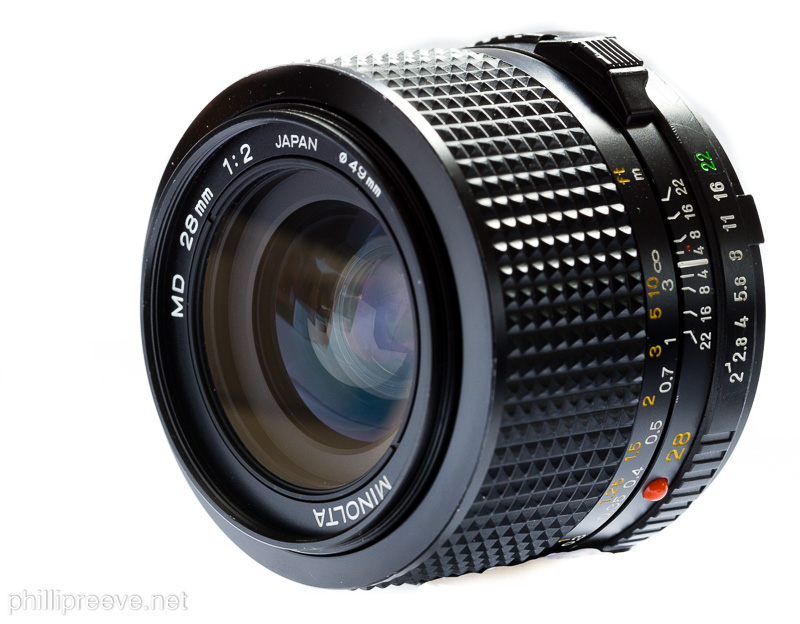
Released in 1981 the Minolta MD 28mm 1:2 is Minoltas joungest manual 28 mm lens. In this review I test it on the a7II to see how relevant it is today.
Specifications
| Diameter | 64 mm |
| Length | 50 mm |
| Filter Thread | 49 mm |
| Weight | 265 g |
| Max. Magnification | 1:8 |
| Close Focusing Distance from the sensor | 0.3 m |
| Number of aperture blades | 6 |
| Elements/ Groups | 9/9 |
Image Samples
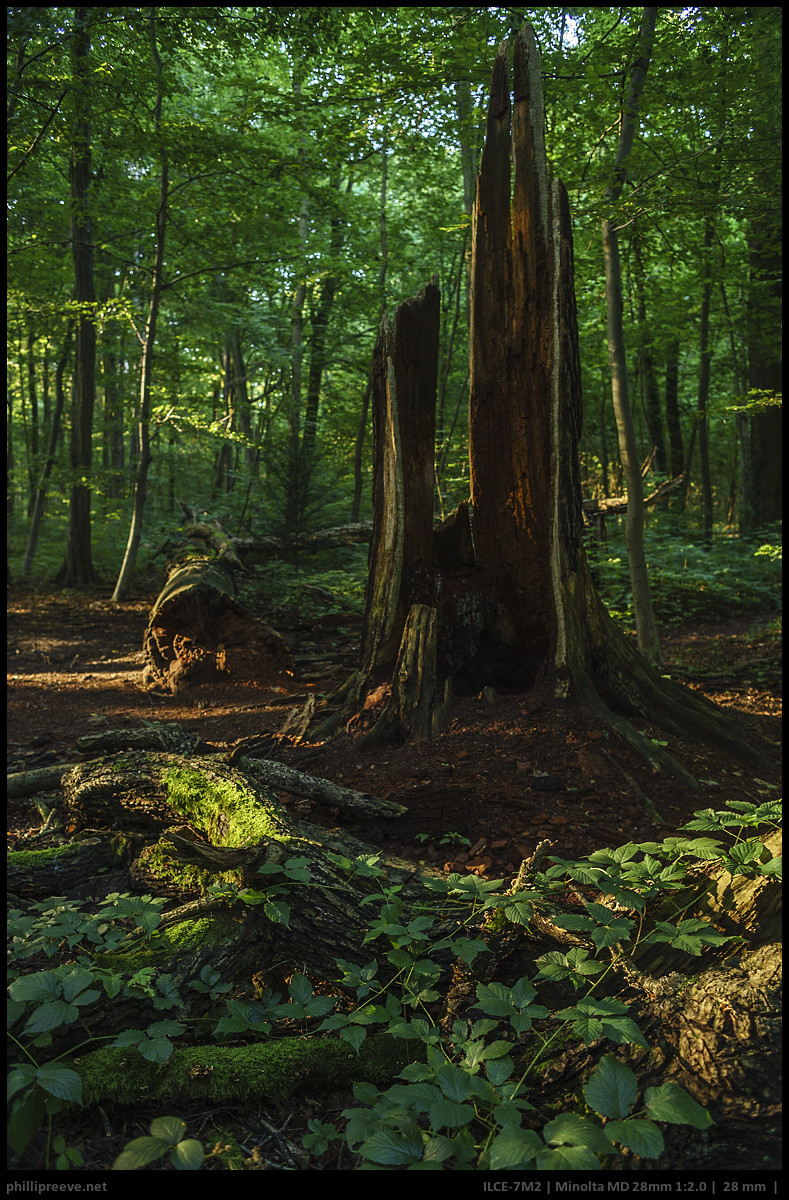
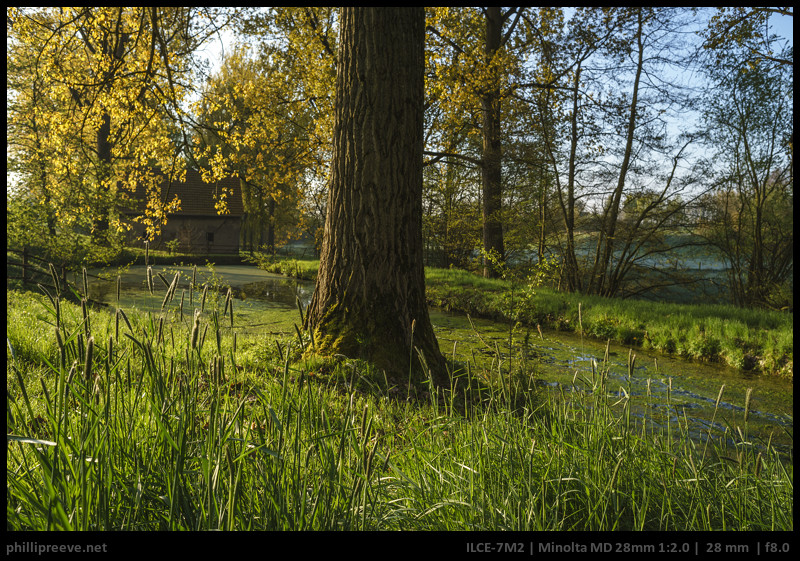
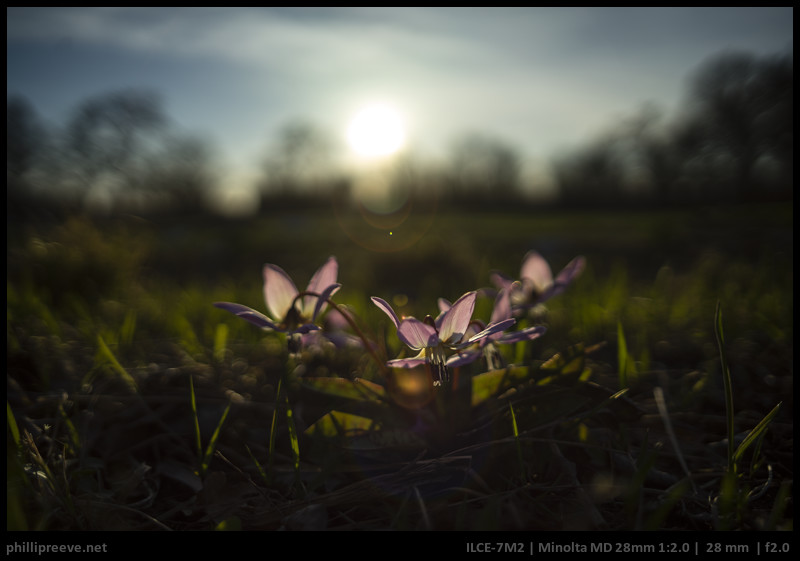
You can find most of the images in this review and more in full resolution in this Minolta MD 2/28 flickr set.
Contents
Versions
Minolta made two optically different 2/28 lenses in SR-mount:
- The Minolta MC W.Rokkor 1:2 f=28 mm was released in 1975. In 1977 it was updated to MD but there were no mechanical or optical changes done to it. It has floating elements and the front rotates when focus is changed. Build quality is excellent, few lenses surpass it. It weights 340 g.
- The Minolta MD 1:2 28 mm was released quite late in 1981 and dropped the Rokkor from the front plate. It is different in several ways from its predecessor. First it has a different optical design and performance was significantly increased. Build quality in contrast decreased. The focus isn’t as smooth and the aperture ring is made from plastics. This came with a significant reduction in size and weight so that it it 75g lighter than the Rokkor version. While the front lens rotates the 49 mm filter thread does not. According to artaphot.ch the optical design was carried over to the AF version. This review is about this later version.
I think the older Rokkor version serves quite different purposes than the newer plain MD version. The Rokkor version is a joy to use and a low contrast character lens wide open with decent but not great performance stopped down. The newer version still has quite a bit of character wide open but better sharpness and contrast. I is not quite as pleasant to handle but lighter and a strong performer stopped down.
With input from Dennis Lohmann’s Minolta List.
Build quality and handling
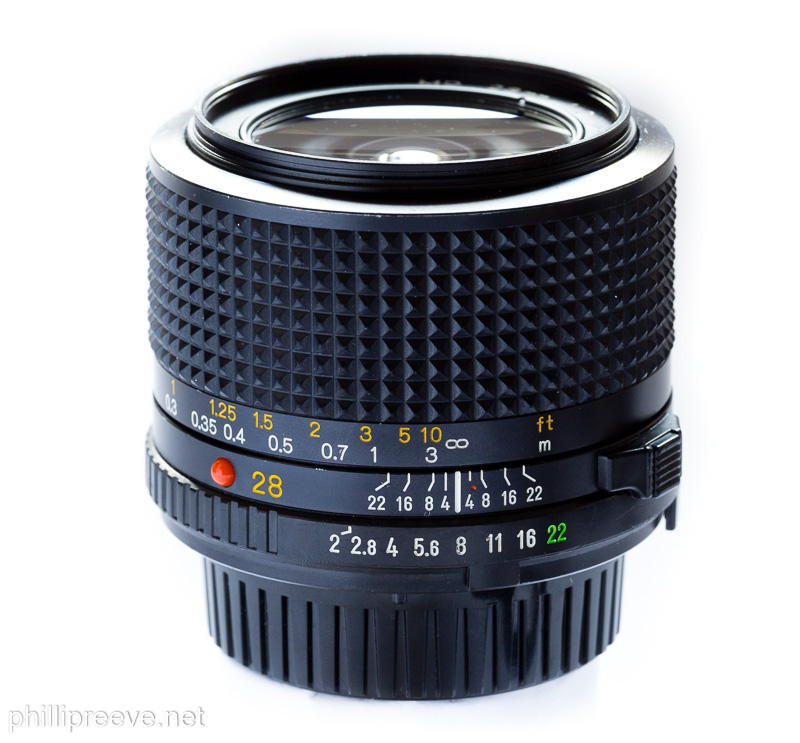
Minolta’s last generation of MD lenses still offers very good build quality by modern standards but compared to other legacy lenses they are not quite as nice.
Focusing Ring
The focusing ring travels around 65 degrees from 0.3 m to 1 m and a further 18 degrees to infinity. This is a little steep for a wide angle but not much of an issue.
The rubberized focusing ring offers good grip and a pleasant diameter. The resistance is higher than I like on my copy and I have made a similar experience with other plain MD Minoltas.
Aperture
The aperture ring is made from plastics and shows some sign of usage on my otherwise little worn copy. It feels a bit cheap and while the click-stops are distinctive enough I have seen better implementations. It has no click-stop between f/2.8 to f/4 and f/16 to f/22 but half-stops in between.
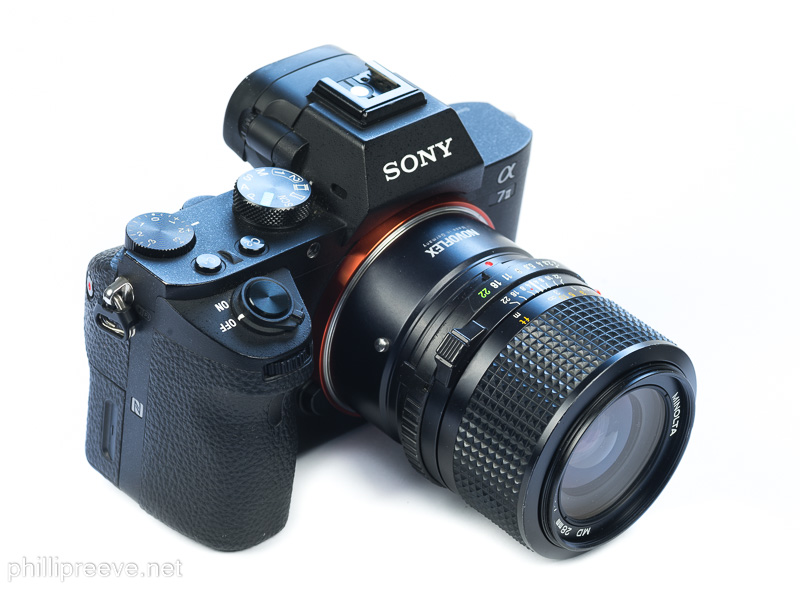 Hood
Hood
I like the native hood which doesn’t do a lot to shield the front lens but it is small and protects it well from any damage so that I can use it without a lens cap.
Size and Weight
At 265g and with a length of 50mm the Minolta is small but not tiny and well balanced on the a7 series.
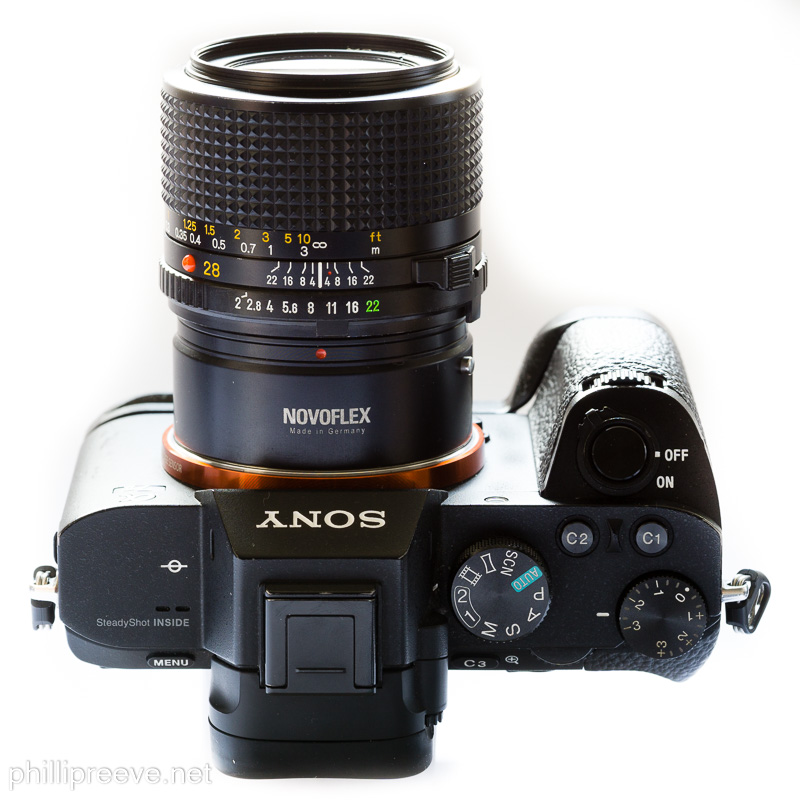
Optical performance
These results are based on the use with a Sony Alpha 7/7II.
Flare Resistance
Flare is definitely an issue with this lens. If you have a stronger light source in the image you get a very big ghost and veiling flare in a large area of the image. For me this is a limiting factor since I like to shoot backlit scenes. If you like the effect though it might be just the lens for you.
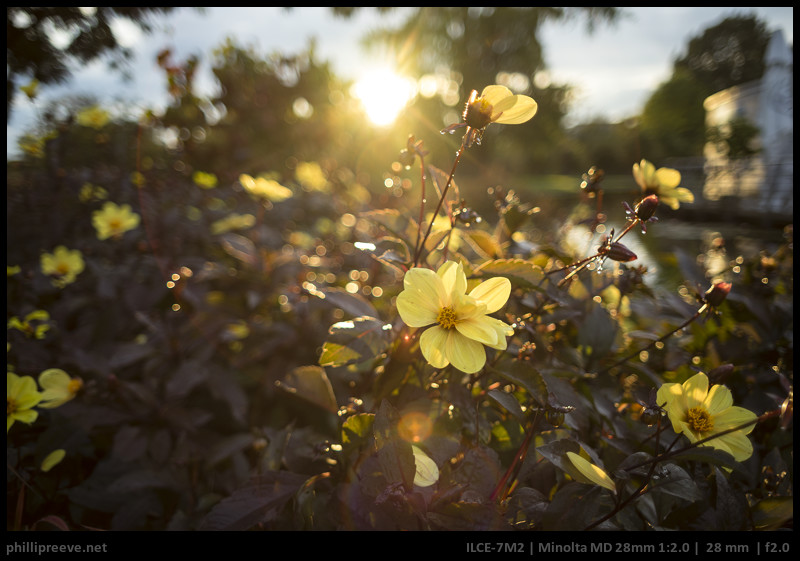
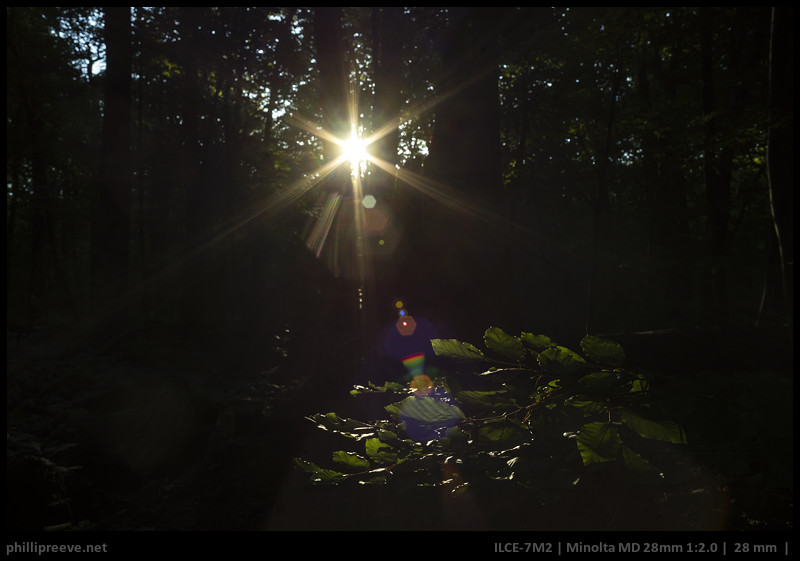

Bokeh
The Minolta MD 2/28 has rather busy bokeh wide open. Stopped down you get hexagonal oof highlights because it only has six aperture blades but bokeh gets smoother.
Cat-Eyes are not much of an issue: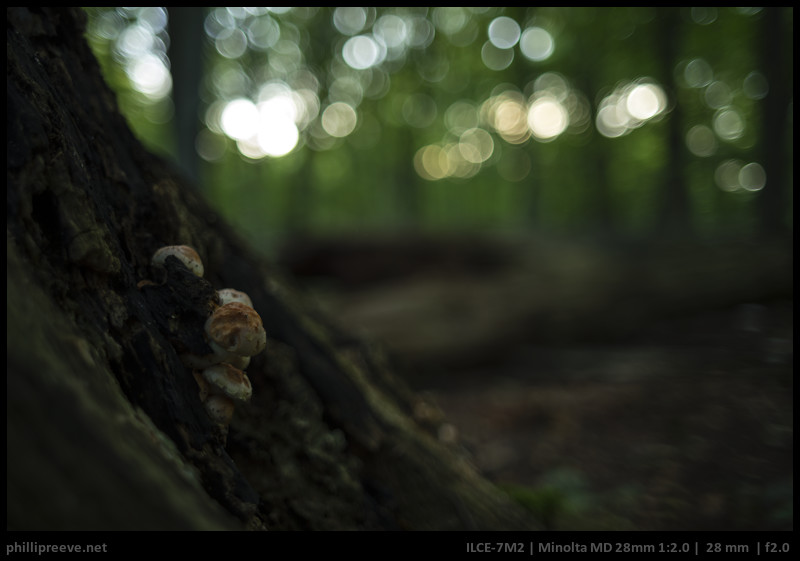
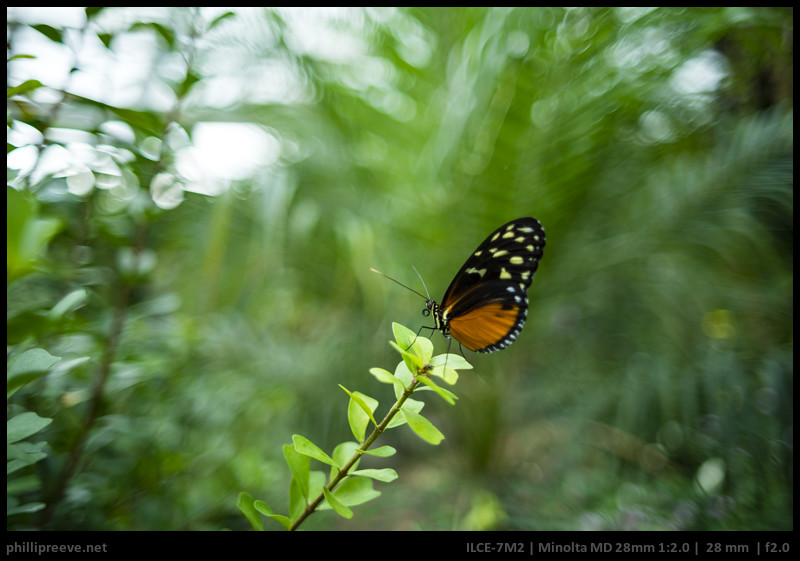
At longer distances bokeh is a bit smoother:
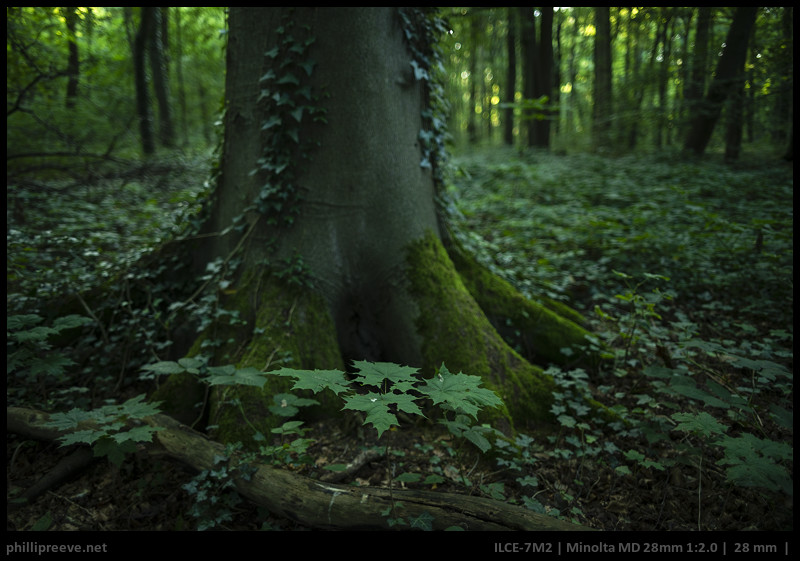
Chromatic Aberrations
Axial CA are corrected very well.
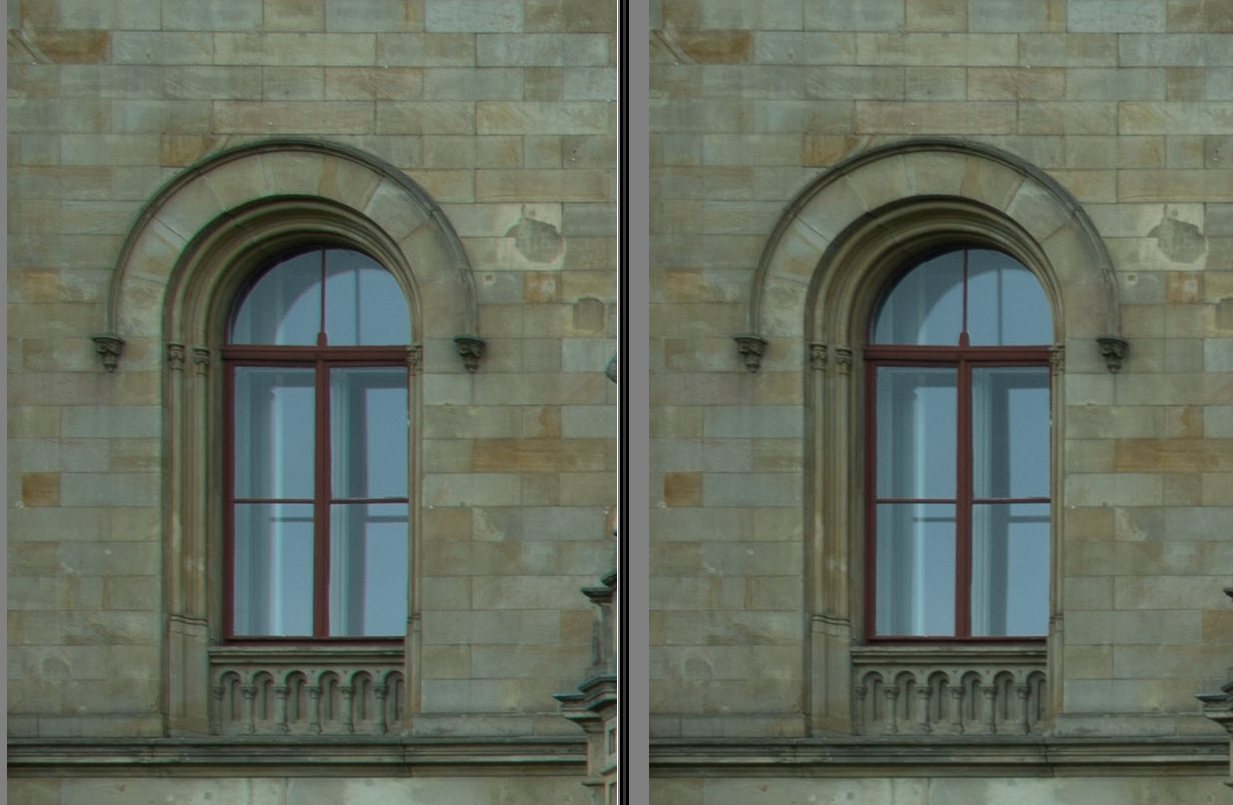
Lateral CA is really low as well. I was surprised by that.
Vignetting
Vignetting is quite high wide open at 2.6 stops, still very noticeable at f/2.8 and more moderate with 1.4 stops at f/4, 1.2 stops at f/5.6

This is an average performance for a fast wide angle and can be an issue for some applications.
Distortion
The Minolta MD 2/28 shows a moderate amount of barrel distortion.
Sharpness
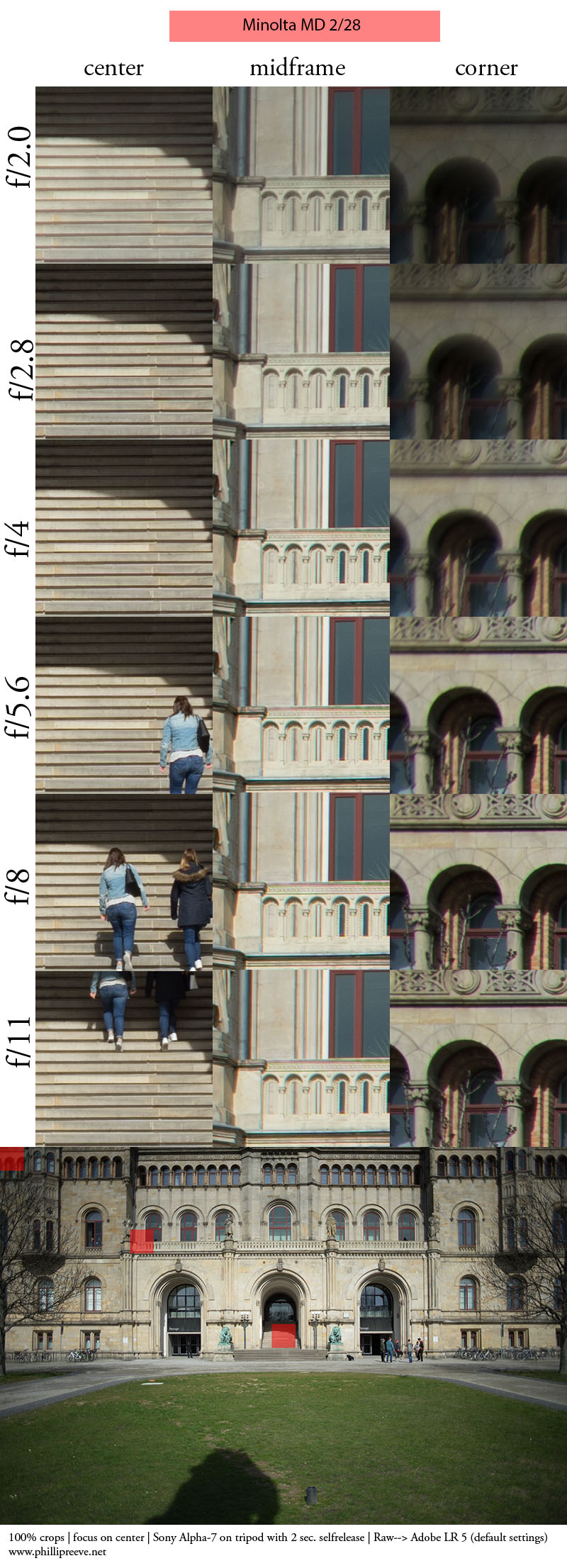
f/2: Good resolution in the center and midframe but overlaid by spherical aberrations which reduce micro-contrast. The corners retain some resolution but because of strong SA they appear pretty soft.
f/2.8: Excellent in the center, very good in the midframe area with somewhat lower contrast, corners remain soft.
f/4: Very sharp across most of the frame, only the extreme corners are still soft.
f/5.6: The corners improve a little.
f/8: Very good performance across the frame.
f/11: Slightly softer in the center, a tad sharper in the corners.
For a lens of its age the Minolta turned in a very good performance but you will need to be aware of the MD 2/28’s limitations to get good results. If you like images with high resolution but lower contrast you can use f/2 without hesitation since most of the image shows good resolution. But you have to stop it down to f/2.8 for good micro contrast in the center and to f/4 to get good sharpness across most of the frame. At f/8 the lens is tack sharp across the frame and will deliver excellent results for landscape.
Alternatives
Minolta MC/MD Rokkor 2/28: It is bigger and less sharp. I think it could be the more attractive lens none the less since the bokeh is a bit more attractive and handling a joy.
Olympus OM 2/28: The small Olympus is a little less sharp stopped down but I prefer the handling and it has higher contrast and better flare resistance but also higher vignetting. Bokeh is very busy as well and price is similar.
Sony FE 2/28: The smaller and lighter Sony is sharper at f/2 with higher contrast, much better flare resistance and much smoother bokeh so unless you after a character lens the Sony is the much more versatile option. Downsides are worse build quality and strong distortion which needs to be corrected as well as the higher price.
Zeiss Distagon 2.8/28: The Zeiss is the better landscape lens because it has a little higher contrast, much better flare resistance and a little higher micro contrast as well. Build quality of the Zeiss is inferior but it is a bit more expensive and less versatile because it is slower.
Pentax K 3.5/28: My favorite legacy wide-angle for landscapes is of similar size and sharpness with better flare resistance, higher contrast and less vignetting. If you can find one it is usually more affordable than the Olympus.
Voigtlander 2/28 VM: A modern manual lens which is more expensive but it has smoother bokeh and very good sharpness from wide open, good flare resistance and nice sunstars. It has some issues with the Sony a7’s thick sensor stack but none the less it delivers a superior performance in about any aspect but the close focusing distance.
Conclusion
pros
|
average
|
cons
|
This is Minolta’s sharpest 28 mm lens. Stopped down to f/8 is is competitive with expensive native lenses even on today’s 24 MP Sony a7ii. Only the flare resistance is not up to modern standards. At f/2 it is more of a character lens though with very busy bokeh and reduced contrast but good resolution. So it might be a good option for you if you like lenses which show “character” wide open and perform strong stopped down.
If you want a general purpose 28mm lens the Sony FE 2/28 or Voigtlander 2/28 are much more attractive general purpose lenses to me because of their smooth bokeh and high contrast from f/2 as well as a good flare resistance the Minolta doesn’t offer. At least for my landscape photography I prefer to use manual lenses but here high contrast and good flare resistance are important and other lenses like the Pentax K 3.5/28 or Zeiss 2.8/28 perform better than the Minolta in these regards even though they are not sharper.
If you know how to use it the Minolta MD 2/28 can produce excellent results on a modern 24 megapixel camera but at the same time it has quite a few limitations like very busy bokeh and mediocre flare resistance. In light of this performance I find it a bit expensive.
The Minolta MD 28mm 1:2 usually sells for around $200 used at ebay.com or around 200€ at ebay.de (affiliate links). Also check out my Minolta SR-mount adapter guide.
If this review was helpful to you, please consider using one of my affiliate links or sharing the review with others. Thanks ?
Images Samples
You can find most of the images in this review and more in full resolution in this Minolta MD 2/28 flickr set.
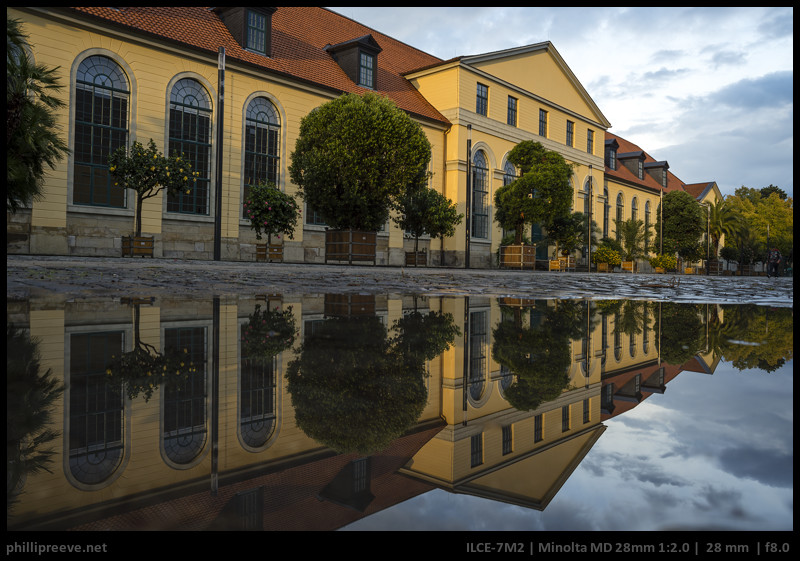
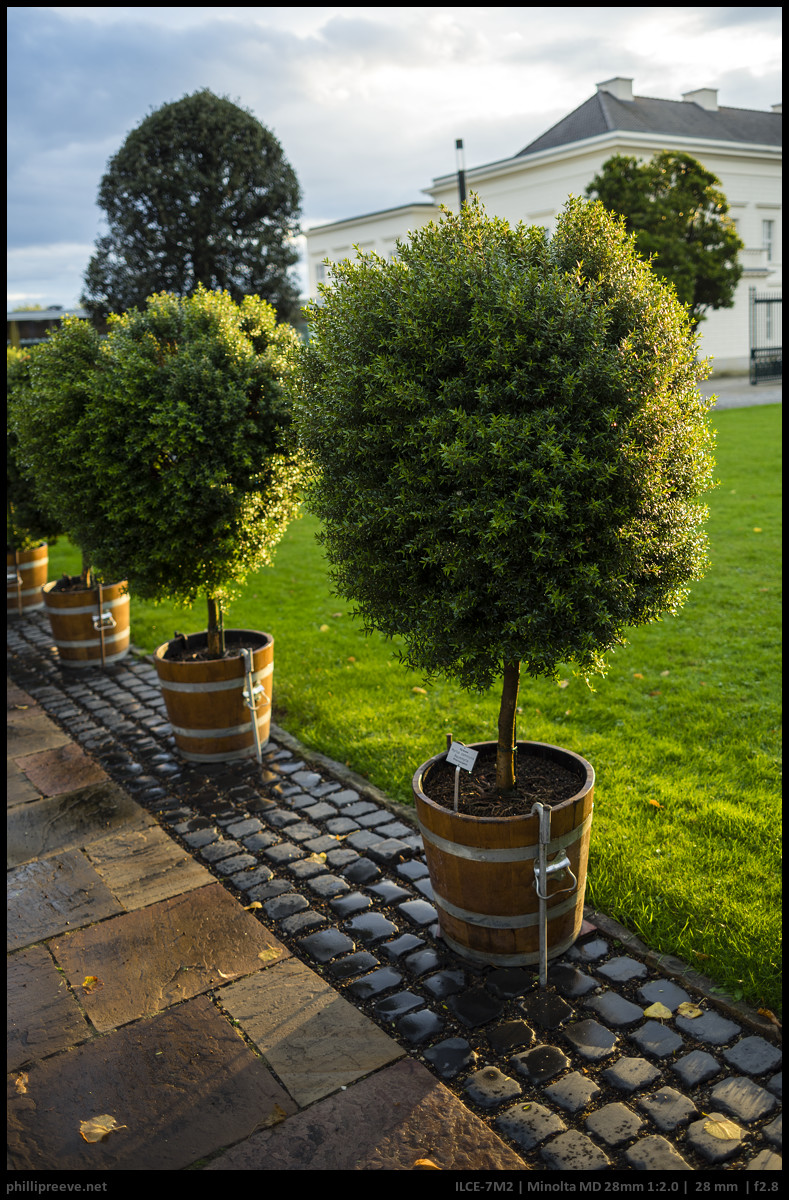
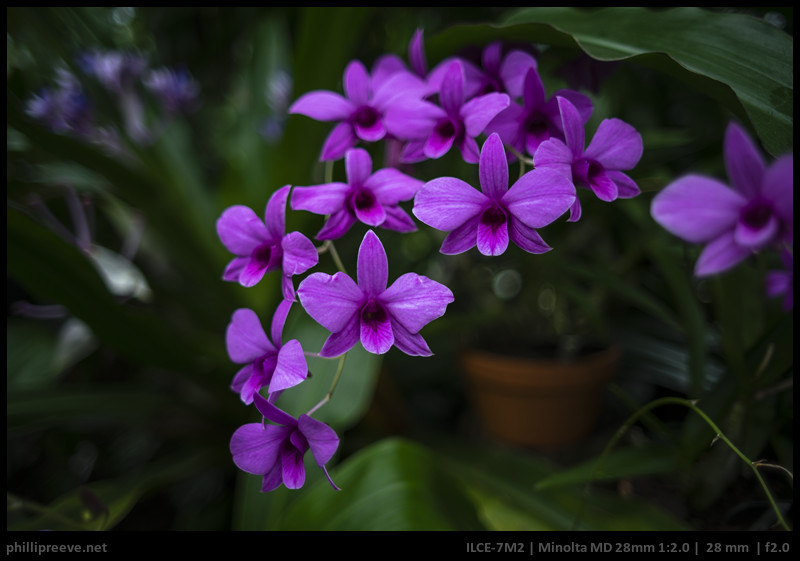
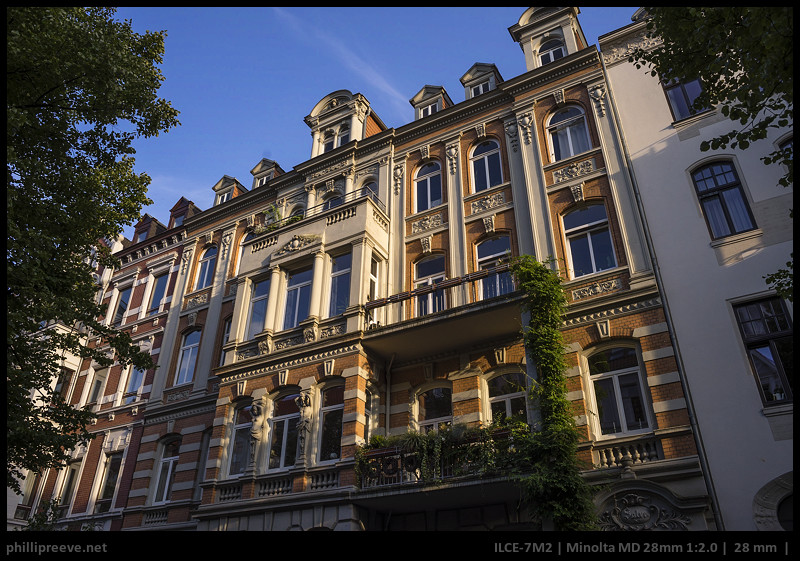
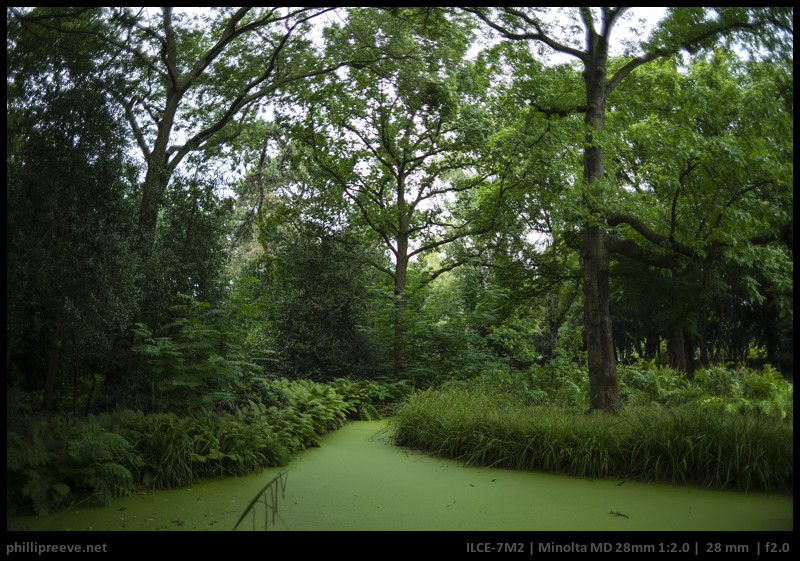
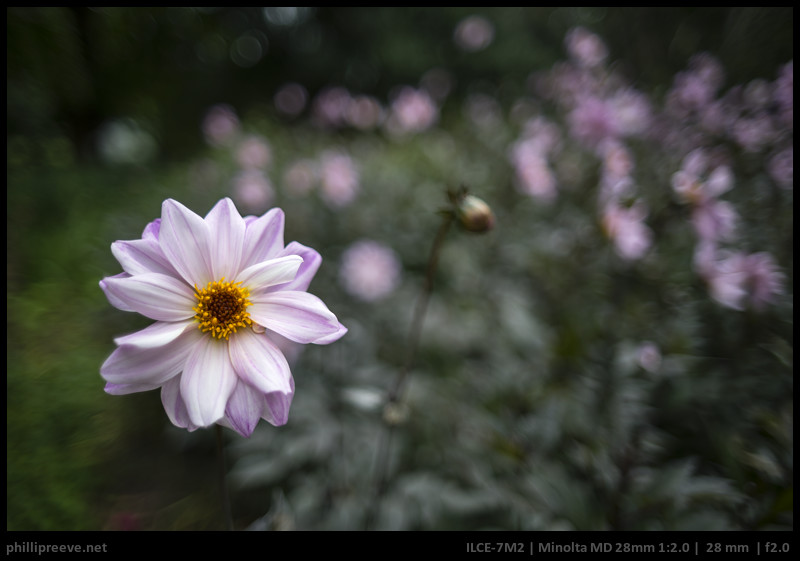
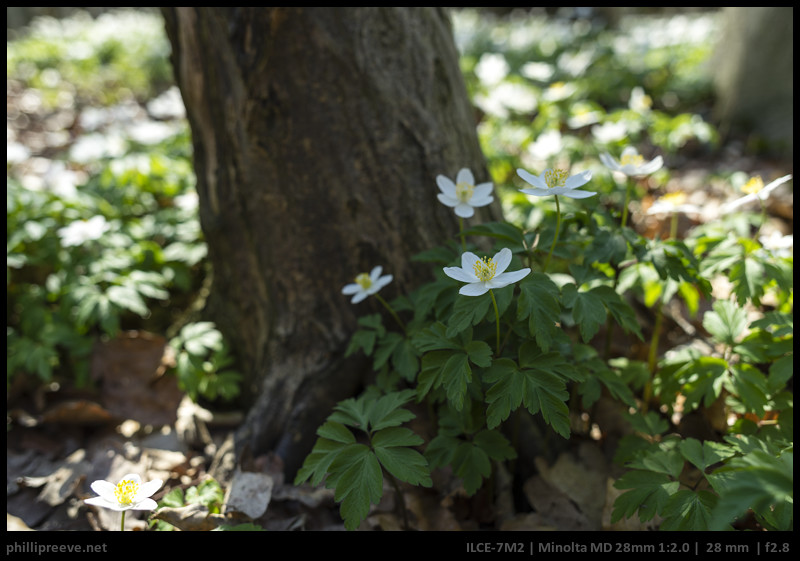
Other articles
- The rated List of Minolta MD/MC Lenses on the Sony a7
- Affordable manual lenses for the Sony Alpha 7 series
- Sony FE 2/28 Review
This site contains affiliate links. If you make a purchase using any of the links marked as affiliate links, I may receive a small commission at no additional cost to you. This helps support the creation of future content.
Latest posts by Phillip Reeve (see all)
- Review: Samyang AF 75/1.8 FE - April 12, 2021
- The FE-List now has 113 lenses on it - March 25, 2021
- 2020 – Year’s end review - December 28, 2020
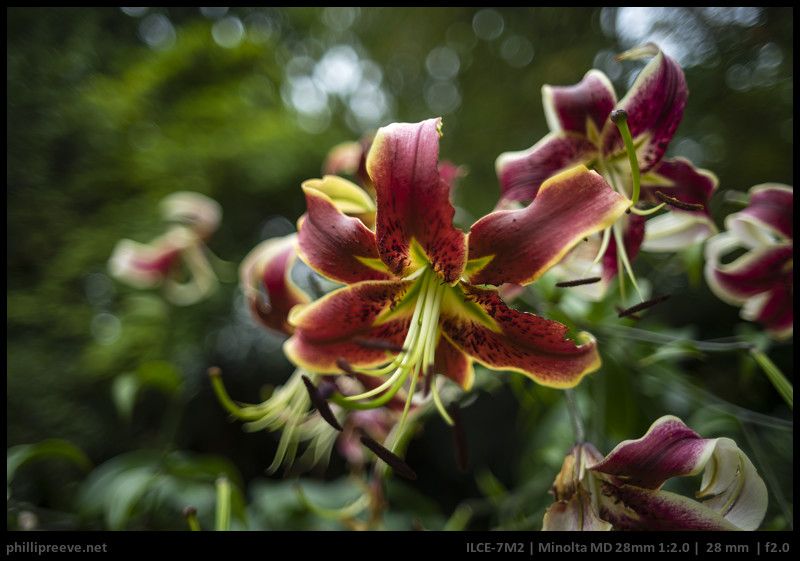

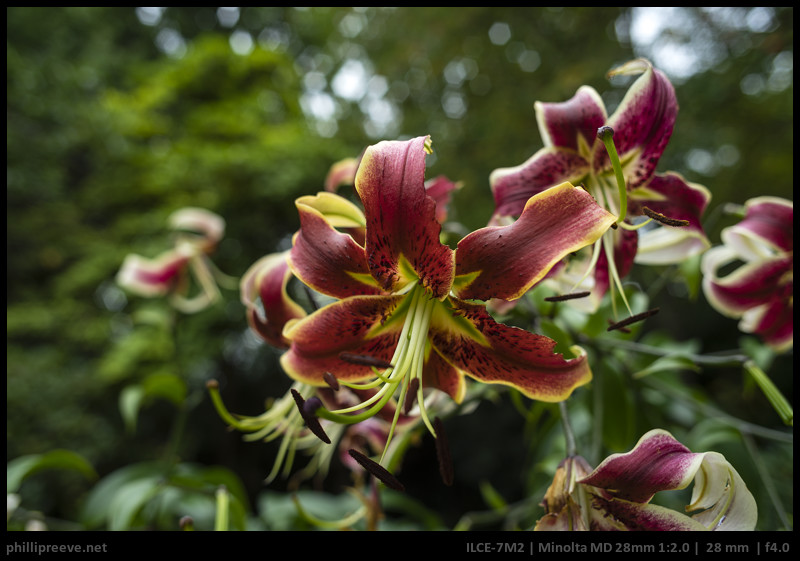
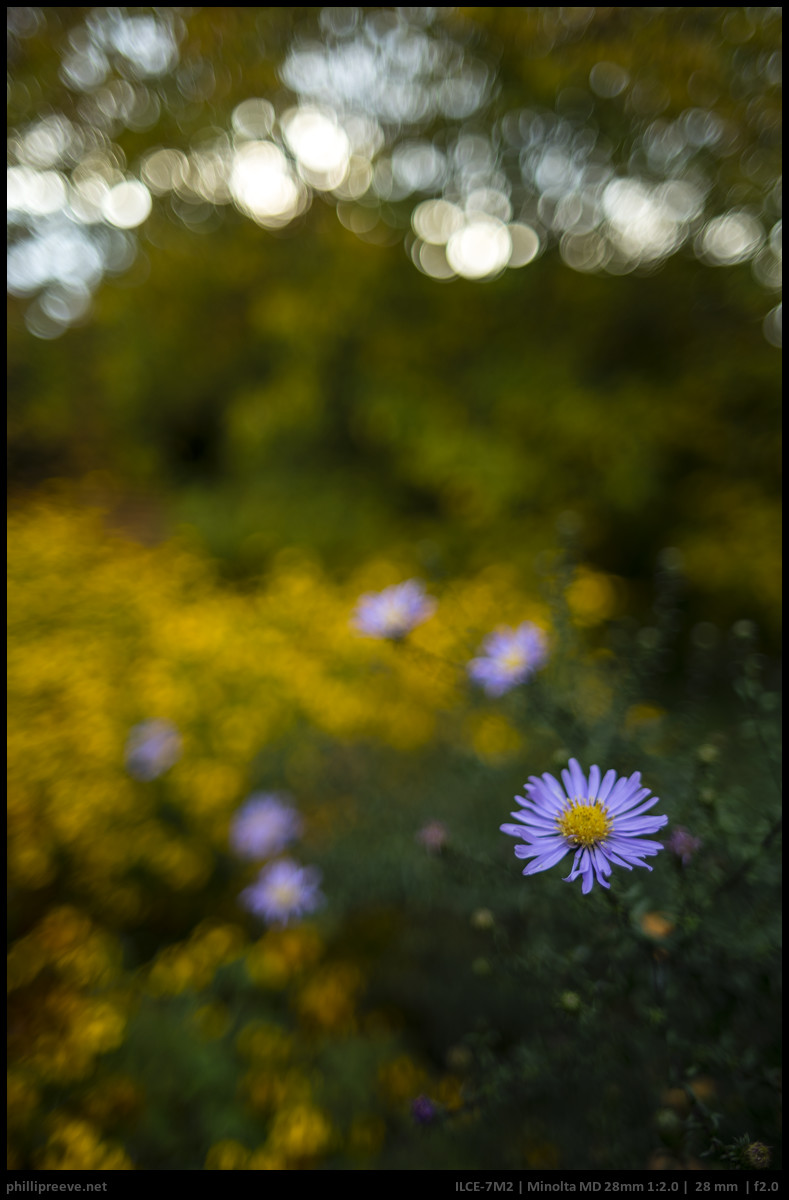
My God…. Your photos are so magical…. Hope one day, I’ll be able to take photos like u.
I think Minolta must have switched helicoid lubrication with their “plain MD” or “MD3” line (probably moved to helicoids of cheaper materials for certain lenses as well). Stiff focus rings seem much more common than with the plain MD versions of lenses than the older MC early MD lenses. I keep meaning to take my copy of this lens apart to re-lube it (it’s so stiff I can barely turn the focus ring when it’s not attached to the camera).
Are you sure that it is just the lubrication? I have read from semi reliable sources that they changed from aluminium on brass to aluminium on aluminium helicoids and that this plays into the less smooth focusig which can’t be fixed.
Yeah, that’s what meant about helicoids of cheaper materials. If I recall correctly, some of the really cheap lenses might actually have plastic helicoids. It’s been a while since I took a plain MD lens apart and I don’t remember for certain. I’ll let you know when I get around to giving my 28/2 a CLA (the Contax G 28 has severely reduced my motivation in this matter). My plain MD 24/2.8 has always been smooth and easy focusing fwiw.
I think there are some real gems in the Minolta md ore md Rokkor series, and often they work very well on Sony A7rii. Thats at least my findings with Minolta wideangle lenses, but at 24mm and wider, Canon fdn is better.
MMH
Canon 20 mm is better than Rokkor 20 mm granted
Minolta MD 24 mm 2.8 (MDIII 8/8) is hard to beat… and I gave my Canon 24mm f2.8 as it had the plasticky thing which made the focus ring wobble this Canon nFD is optically not as good anyway.
For MDs, I think the smoothness and ease of focusing depends on state and use. The best are very smooth… maybe alu on alu does wear quicker?
FDn and MD-III series are both plasticky pieces of crap, but 24/2.8 notorious bearing failure stems from Canon’s **metal** craftsmanship.
They did really poor QA on their helical which put too much stress on plastic bearings and led to their premature failure.
Sliding tabs focusing system was in fact superior to competition, and when done correctly it had zero problems with longevity.
See 50/1.4, 100/2.8 and others, who are still alive and well.
It’s worth mentioning that most modern MF lenses adopted FDn design.
Nikkor ais 28mm f2 and this Minlota MD 28mm f2, do you think which one is better?
I think no one here has compared both lenses side by side which would be necessary to give a qualified answer.
I think Minolta MF 28/2 is better than Nikon 28/2.8 AIS even if sharpness is not much difference, but color rendition.
My fav Minolta lens. Your Flickr link shows the Zuiko, though